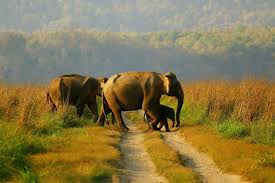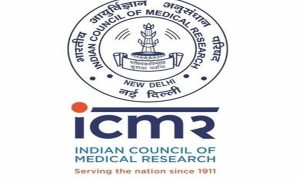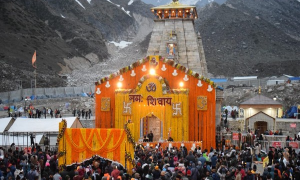Elephants are symbolic to our culture. Our country is home to 60 percent of the Global population of Asian Elephants. The current population estimates indicate that there are about 50,000-60,000 Asian elephants in the world and there are nearly 30,000 elephants in India. India accords highest protection to Asian Elephants, the National Heritage Animal of the country.
It has been 30 years of Project Elephant, a project introduced to give impetus to conservation efforts of elephants in India. It was started in 1991-1992 to protect elephants, their migration routes, and their natural habitat.
Protecting the Elephants
August 12 is marked as World Elephant Day, and recognizes the importance of the ‘gentle giants’ in the world’s ecosystem. Launched in 2012, the Day brings attention to the urgent plight of elephants who face the threat of Poaching, habitat loss, human-elephant conflict, and mistreatment in captivity.
Addressing human-elephant conflict
The Government of India has been taking several initiatives for elephant conservation. It has been working towards minimising human-elephant conflict. In this direction, in 2020, the Ministry of Environment released a document on best practices and launched a portal on the human-elephant conflict.
Further, the Government has laid plans for elephant corridors that are dedicated small patches of land for easy movement of elephants. As part of it, efforts are in full swing to provide food and water to the animals in the forests itself, such that growing human-animal conflict cases can be reduced. The Government is using LiDAR technology for this.
Dedicated Elephant Corridors
Human-elephant is a major issue related to elephants. The Ministry in this regard provides financial assistance to States/UTs under the Centrally Sponsored Schemes of ‘Project Elephant’ for the management of wildlife and its habitats in the country. Further, the Government also provides crop insurance to the farmers for their crops being damaged by wild animals under Pradhan Mantri Fasal Bima Yojana.
According to a 2010 release, the Ministry of Environment has identified 183 corridors for elephants. Out of this 138 are State Elephant Corridors, 28 Inter-State Elephant Corridors and 17 are International Elephant Corridors. In addition to this, to mitigate the Human-Elephant Conflicts in the transboundary areas, the Government of India entered into a series of dialogues with Bangladesh which resulted in the Protocol on Transboundary Elephant Conservation between the Republic of Bangladesh and the Republic of India, signed in 2020 that facilitates smoother movement of elephants between India and Bangladesh and vice versa.
Capacity Building
India is committed to the cause of saving elephants and other animals and is working towards a robust, practical, and cost-effective solution to end human-animal conflict. The Government is also working toward capacity building and training of forest staff.
Special recognitions & efforts
The Indian Government declared elephant as the National Heritage Animal of India to celebrate and spread awareness toward the conservation of the species. Notedly, Indian Elephant (Elephasmaximus) is accorded the highest degree of protection under Indian Wildlife Protection Act (1972).
The Wildlife Protection Act, 1972, bans the trade of all elephant ivory. Further, in India, all ivory trade markets and carvings have been closed since 1990. A high level of protection has led to a stable population of Asian elephants in the country. India thus has extended support to measures to close legal markets which are contributing to the poaching of elephants or illegal trade of ivory.
Regarding managing captive elephants, the Indian delegate said that the Government is taking measures through legislatures that require a Valid Ownership Certificate issued by the Forest Department for any person to possess the captive elephant. Further, microchips are widely used to identify legally owned captive elephants.
Recently, the Government of India under Project Elephant started DNA profiling of captive elephants in collaboration with the Wildlife Institute of India. It involves data capture through a mobile application. In Principal, India mentioned that every elephant range country shall adopt a reliable marking and tracing system for captive elephants on their own. In this regard, India extended its support to the revised and new draft decision on trade in Asian Elephants given in Annex 3 CoP19 Doc 66.1.




























 WhatsApp us
WhatsApp us